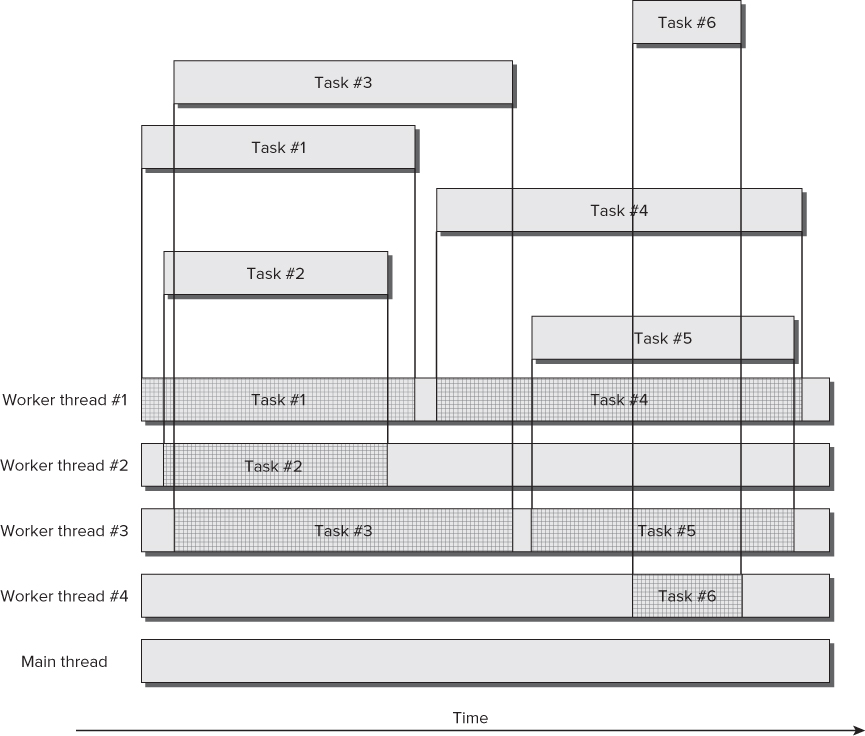Creating and Managing Tasks
TPL introduced the new task-based programming model to translate multicore power into application performance without having to work with low-level, more complex, and heavyweight threads. It is very important to understand that tasks aren't threads. Tasks run using threads. However, it doesn't mean they replace threads. In fact, all the parallel loops used in the previous examples run by creating tasks, and their parallel and concurrent execution is supported by underlying threads, as shown in Figure 19.8.
Figure 19.8 Tasks and their relationship with threads

When you work with tasks, they run their code using underlying threads (software threads, scheduled on certain hardware threads, or logical cores). However, there isn't a one-to-one relationship between tasks and threads. This means you aren't creating a new thread each time you create a new task. The CLR creates the necessary threads to support the tasks' execution needs. Of course, this is a simplified view of what goes on when creating tasks.
Synchronizing code running in multiple threads is indeed complex. Thus, a task-based alternative offers an excellent opportunity to leave some synchronization problems behind, especially those regarding work scheduling mechanisms. The CLR uses work-stealing queues to reduce the locks and to schedule small work chunks without adding a significant overhead. ...
Get Professional Visual Basic 2012 and .NET 4.5 Programming now with the O’Reilly learning platform.
O’Reilly members experience books, live events, courses curated by job role, and more from O’Reilly and nearly 200 top publishers.

